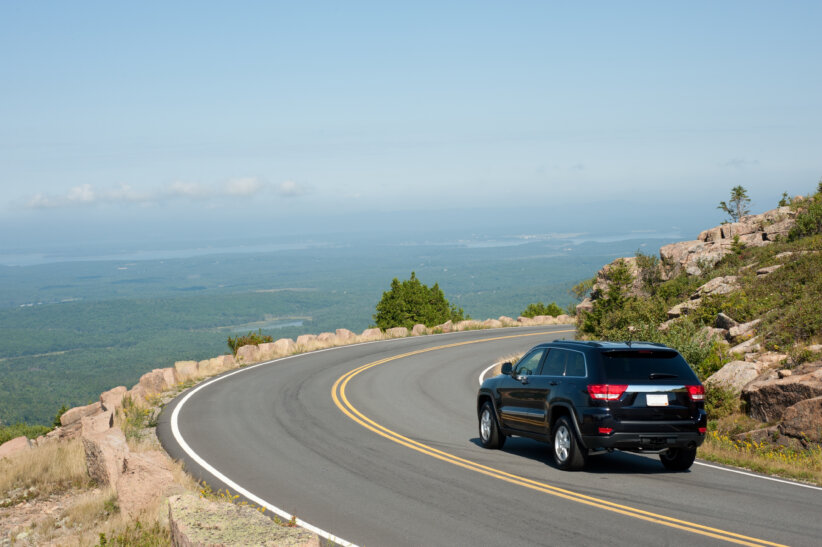The New York Hall of Science
Recently, my family and I drove to Queens to visit the New York Hall of Science. Located in a building that was originally built for the 1964 World’s Fair, the museum has been open since 1986, and to excellent reviews. Even as we drove into the parking lot, we immediately knew this was not your ordinary museum. Looking up we saw the tops of what looked like massive rockets jutting up from over the fence. It turns out we were looking at part of the Hall’s Rocket Park which houses real rockets from the mid-1960s (donated by the Space Program for the 1964 World’s Fair and later renovated in 1999) including a Gemini Titan II rocket, a Mercury-Atlas D rocket and capsule, and a Saturn V F-1 engine.
On Your Mark
Upon entering the building, the kids raced into the central pavilion and down the stairs to the ground floor, home to a number of permanent exhibitions as well as the main travelling exhibitions. The three travelling exhibitions on display during our visit were “Charlie and Kiwi’s Evolutionary Adventure,” “Molecules and Health,” and “Wild Minds – What Animals Think.” My 6-year-old son was quickly engrossed in a touch screen program entitled Dinosaur to Bird that, through a fun game, explored the evolutionary journey between these two species. My 8-year-old daughter and her friend, meanwhile, dug for fossils, compared insect body parts and watched the large cage of live budgies.
Please Touch
Everything at the Hall of Science is hands-on and we were all instantly engaged by display after display. My daughter discovered the Temple of the Whirlwind, a seven-foot high vortex of swirling mist that simulates a tornado. Next, she and her friend became enraptured with the bubble table. They went as far as to encase themselves over and over again in immense bubble cocoons under the guidance of a friendly and helpful volunteer. Meanwhile, I checked out the “Wild Minds” exhibit and tried to see if I was as smart as a bird at solving puzzles. After I spent just over 30 seconds trying to get a ball out of a tube following specific rules, I watched a video of a bird doing the same thing in considerably less time.
Next we headed into the north wing to the “Sports Challenge.” This exhibition demonstrates various scientific principles in action in the world of sports – from using the physics of trajectory to accurately return a 120 MPH serve in tennis to seeing how different surfaces affect the bounce of a basketball. The kids tried to keep their balance while on a moving surfboard, and faced off against each other in a simulated wheelchair race. I was drawn to the pitching challenge where I fired my best fastball at a cool 47 MPH, barely faster than my wife, who doesn’t even play the game.
Outdoors Too
With our competitive juices flowing, the five of us headed outside to play nine holes of Rocket Park Mini Golf (separate admission required). Each hole on this deceptively difficult course explores an integral ingredient of space travel, from hitting a launch window, to finding the right re-entry angle to navigating through space junk. After triumphantly defeating the 6- and 8-year-olds by two strokes, I followed the children toward the not-to-be-missed Science Playground. This playground, which also has a separate admission, is worth the trip all by itself. It is an interactive paradise of science-themed activities disguised as a children’s playground. There are water activities, a climbing net, balance games, sun-triggered kinetic sculpture, a massive Rube Goldberg–style ball contraption that envelopes the entire area and the steepest slides I have ever seen. When asked later what his favorite part of the entire trip had been, my 6-year-old answered, “There’s this long slide that you should have gone down. It was so fun. It’s so deep and you go really fast.”
More Fun
After the playground and a stop for lunch in the cafeteria-style dining area, it was time to explore “The Search For Life Beyond Earth,” an exhibition detailing the efforts to find extra-terrestrial life by studying extreme environments here on Earth. Like everything else in the Hall, this is a hands-on exhibit. It explores rivers of acid in Spain, roving robots similar to the ones currently puttering about on Mars and the interior of the Alvin deep sea submersible, wherein all three kids were happily flipping switches, pushing buttons, and trying to pick up a Styrofoam rock with a mechanical claw arm. Next we entered Mathematica, an area dedicated to mathematics. One entire wall serves as the timeline of the history of mathematics and multiple mathematic principles are on display throughout the exhibit. One of my favorites was the exhibit “Projective Geometry,” where a bunch of random shapes come together to form an intricate image depending on where you view them. My daughter learned a geometric magic trick from one of the volunteers, the kids were fascinated by an arrow-shaped train that traveled around a Mobius bend and we watched balls fall randomly into a probability chamber in the shape of a bell curve.
Science Everywhere
Next, we took a side trip down the Hall of Mirrors, where the kids discovered that time-honored joy of standing in front of funhouse mirrors as they grew short, then tall, then large, then skinny. They ducked into corners to grow extra hands or an additional nose. When the kids finally had their fill of gazing at their goofy reflections, we visited two other interactive exhibitions.
“Seeing the Light” is an exploration of color and light that included a rotating display of 3-D shadows and an exhibit entitled “Recollection” where the kids stood between a camera and a wall screen and created moving, colorful images on the screen. In “Realm of the Atom,” which delves into the microscopic world of the atom by studying particle waves and the effects atoms have on everything around us, they were especially fascinated by a working Geiger counter measuring the decay from a nearby hunk of Uranium and the “Shadow Wall” where the kids walked into the exhibit, then walked out, leaving their shadows on the wall behind them! F
David Neilson is a Westchester-based writer and stay-at-home dad.
When You Go..
The New York Hall of Science
47-01 111th St., Queens, N.Y.
718-699-0005
www.nysci.org
Hours
Open Tuesday through Sunday from September through March. Tuesday through Thursday open 9:30 a.m. to 2 p.m., Friday, 9:30 a.m. to 5 p.m. and Saturday and Sunday 10 a.m. to 6 p.m.
Open seven days a week from April through August, see website for exact hours.
Closed Thanksgiving and Christmas Day.
Admission
General admission tickets $11 adults, $8 children ages 2-17.
Combination ticket (includes general admission, Rocket Park Mini Golf and Science Playground) $19 adults, $15 children ages 2-17.
Free general admission, September through June, on Fridays from 2 to 5 p.m. and Sundays 10 to 11 a.m.
See website for directions. Strollers are permitted.









